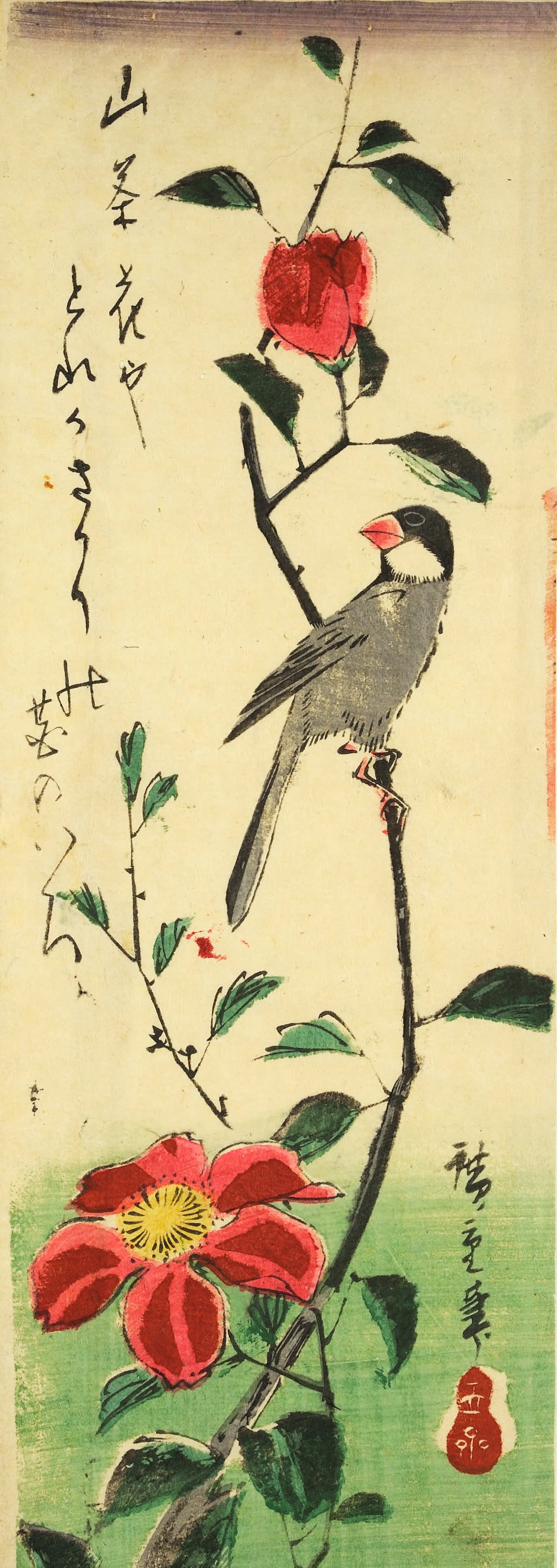
Click here to view image
Utagawa Hiroshige, Japan, Edo period (1603-1868)
Polychrome woodprint
Nishikie polychrome woodprint, ink and colours on paper. Chūtanzaku format, 33.2 x 11.5 cm
This print, datable around XIX century, is extremely simple: only two subjects are represented on an empty background, decorated only by a bright green in the lower part of the print. This choice creates a balance between the image and the piece of poetry on the left part.
The two subjects are a finch with ashy plumage and the camellia branch it is using as a perch for its rest. Contrary to other representations of the Camellia Japonica (known as “Tsubaki” 椿 or ツバキ in Japan), there is no snow here, but a flower in the height of its flowering can still be noticed in the lower part, while there is a bud on the verge of hatching immediately over the finch. This suggests that the scene is set during springtime, even though this flower is normally associated with winter because its flowering happens in December and January.
The choices of representing the branch in the vertical position and of painting the flower in red give a particular elegance to the whole composition.
The camellia is an evergreen plant, in Japan considered sacred since ancient times, and praised for the splendor of its flowers and the robust texture of its leaves. For practical purposes, it has always been used to produce oils and tea. According to floriography, the language of flowers (花言葉 “hana-kotoba” in Japanese), the meaning of the camellia varies based on the colour of its petals. The red camellia assumes the meaning of “the virtue of modesty”, the white one the meaning of “impeccable beauty”, while the pink one the meaning of “modest beauty”. However, there’s another interpretation: the camellia would represent “the woman who committed a crime”. This second reading is linked to Alexandre Dumas’s “La Dame aux Camélias”, a story about love and betrayal, and the Italian opera “La Traviata” by Giuseppe Verdi. Furthermore, the camellia plant has always been considered, since ancient times, a symbol of longevity in Japan: as a matter of fact, 32000 years for a man would correspond to only one year for the plant.




